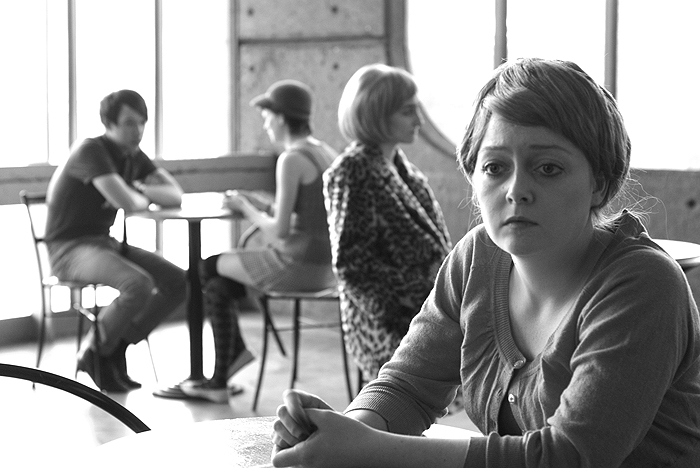
Artist:
Gerard Byrne (born 1969 in Dublin, Ireland; lives and works in Dublin, Ireland).
Materials:
Vinyl wall text and three-channel work for monitors; sound, 50 mins.
Description:
“In the video work Subject, Byrne takes the Modernist architecture of the University of Leeds – conceived in 1960 by Chamberlin, Powell and Bon, architects of London’s Barbican Centre – as a starting point for a broader examination of the radical changes in post-war UK society and of the dialectic relationship that exists between individuals and the built environment that surrounds them. Using a cast of actors playing 1960s university students and a script derived from written material acquired by the university library in the same decade, the film attempts to re-inhabit the architecture at the moment it was first envisioned. However the line between historical documentation and fiction is blurred by a soundtrack that both substantiates and undermines the proof of the naked eye, leaving the viewer suspended between times, uncertain if what they are seeing is historical evidence or a construct of the artist.”
—Press release, “Gerard Byrne, Present Continous Past,” Lisson Gallery website.
“On three monitors spaced throughout the room, one can see different sequences of vignettes filmed in the modernist University of Leeds expansion built between 1963–1975 by the under-appreciated Barbican architects Chamberlin, Powell, and Bon. Within these monumental environments, actors play out documents acquired by the university library archives at that time; Byrne’s material ranges widely, from 1970s articles on sexual relations on campus and broadcast radio and television debates, through to poetry readings and early twentieth-century texts on spiritualism. Each monitor displays various combinations of scenes, some with the audio entirely removed and actions rendered mute. And it’s these distantiated shifts between contextual registers that most poignantly correspond to the wall quote from Edward P. Thompson’s 1963 preface to The Making of the English Working Class, which posited class as a historical relationship rather than a thing.”
—Gil Leung, “Gerard Byrne’s Present Continuous Past,” Art-Agenda, February 18, 2013.

